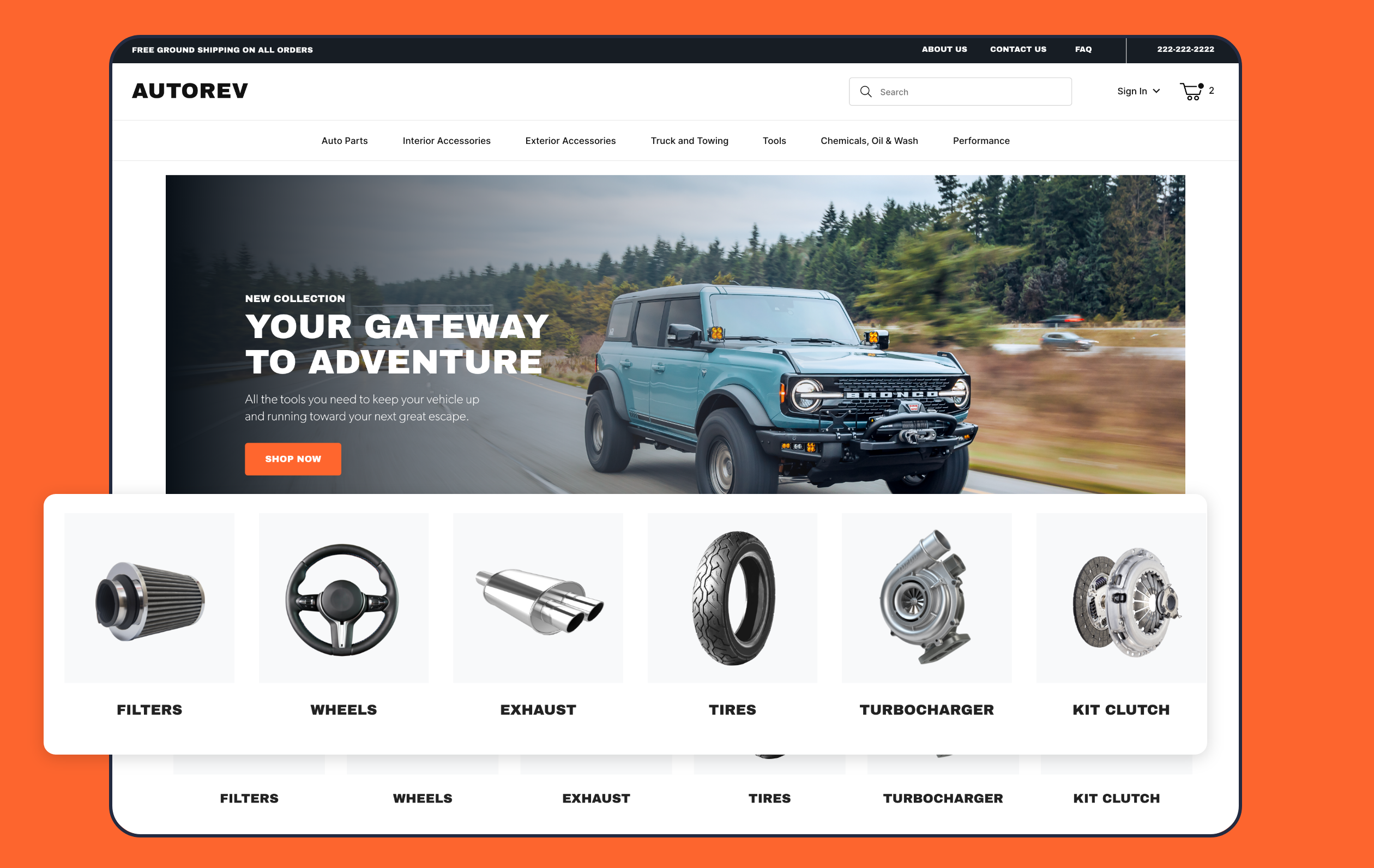By Vanessa Loughty | June 30, 2023

See why top ecommerce brands use Miva’s no-code platform to run
multiple stores, manage massive catalogs, and grow their revenue.
Over the past several years, automotive ecommerce has experienced a spike in popularity, with the auto aftermarket (including automotive product categories like Transmission & Steering, Electrical Parts, and accessories) scoring huge growth. Already valued at $120 billion per year globally, sales for this segment are estimated to rise approximately 300% to $350 billion by decade’s end. COVID-era disruptions made shopping for vehicles and parts in person more challenging for consumers and auto-related businesses, inspiring shoppers to turn to great online automotive solutions in droves. In this blog, we’ll look at why auto ecommerce is on the rise and what benefits it offers consumers.
Pandemic-era supply chain issues and shortages made shopping for vehicles and auto parts in physical stores a significant challenge for all types of shoppers, including shortages, up-charges, and long wait times for orders. As a result, a massive shift occurred towards automotive ecommerce solutions, which made finding and securing scarce products at affordable prices more practical. Starting in 2020, a shocking 30% of all new vehicles were purchased online. Just one year earlier, that number was only 2%. Around the same time, overall automotive B2B sales grew 200% faster than D2C sales. In the B2B automotive aftermarket, digital sales now account for 11% of all orders, indicating enormous growth potential as businesses catch up with online demand.

The digital sales revolution brought new, uniquely relevant shopping features to auto industry shoppers, who had previously been consigned to dealerships and brick-and-mortar auto supply chains for their buying needs. These modern automotive ecommerce innovations set the stage for this decade’s success by making online automotive shopping much easier, vastly more efficient, and more appealing to buyers:
These types of features have proven lucrative for big sellers with a strong online presence like Pep Boys, which has just posted $100 million dollars in revenue from its ecommerce site. Now, modern ecommerce tools can also be adopted by independent merchants in the aftermarket at any scale. The efficiency and effectiveness of ecommerce UI/UX tools can level the playing field for smaller businesses, by increasing the quality of user experiences without increasing expenses. By specifically embracing features which make customers’ shopping experiences more convenient and engaging, businesses can capitalize on the growing popularity of selling auto parts and products online.

Katy Ellquist, Miva’s Digital Marketing Strategist, is an accomplished writer, marketer, and social media analyst who has created sophisticated content campaigns for a broad range of professional clients. She brings to Miva a complex understanding of ecommerce trends and techniques, building upon extensive digital agency experience and a prior role as direct liaison to Miva’s top accounts. Katy is a regular contributor to the Miva blog, covering essential ecommerce topics like design & development strategy, site optimization, and omnichannel selling, with the goal of increasing the actionable knowledgebase of the entire Miva community.
Love it? Share it!
No worries, download the PDF version now and enjoy your reading later...
Download PDF Vanessa Loughty